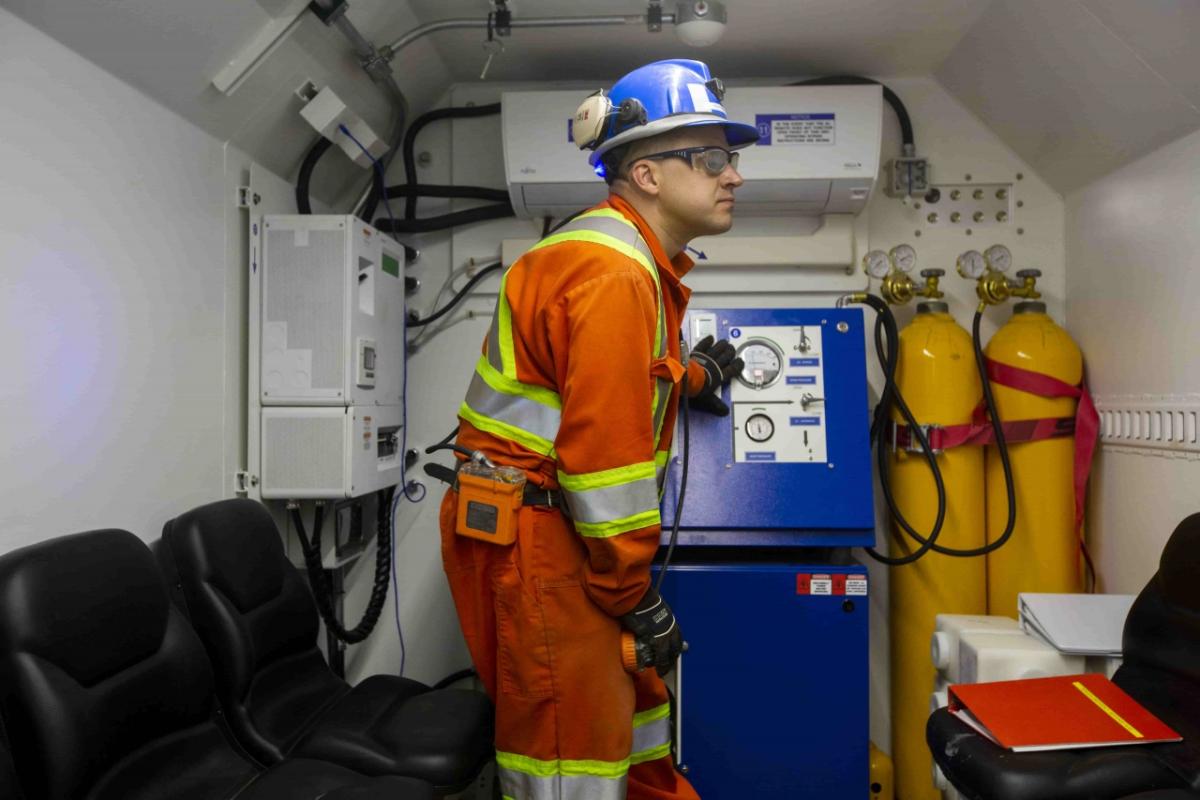Air-Bending at Borden: Compressed Air

In this second of three-part series we dig deeper into how ‘going electric’ at Porcupine Gold Mine’s Borden site has had a positive impact on ventilation requirements and mine air heating. Taking an electric approach to mining has triggered some rethinking – eliminating the need for compressed air networks underground and provoking changes to the emergency response strategy.
Underground mining tools usually include a mix of mechanical and pneumatic tools such as handheld jacklegs and stoper drills. Mechanical equipment such as bolters can now be operated remotely keeping the operator at a safe distance from hazards in the work area. Hand-held tools require cumbersome connections to water and compressed air to function and are heavy to lift, making them difficult to maneuver at the risk of musculoskeletal injuries to the worker. Pressurized air and water lines underground can also be a risk as they age and deteriorate in underground conditions, faulty valves on compressed air lines have caused serious accidents in the industry.
With worker safety in mind, Borden has banned the use of jacklegs and stopers, which are pneumatic hand tools. The other key conventional use of compressed air is for face pumps. These pumps are also known as sand pipers, are easy to use, very compact and bulletproof. For Borden a skid-mounted electric pump was designed to replace these sand pipers. By eliminating the main customers of compressed air, it eliminated the need for compressed air infrastructure such as compressors, pipe networks, headers, and hoses in the mine. Portable compressor units will be on hand at site should compressed air be required for underground construction projects.
Compressed air is typically also regarded as a secondary source of breathable air in case of a fire or other emergency underground. Borden’s Emergency Response Team developed a strategy for these situations in absence of compressed air networks. John “JY” Young, Safety Health & Environment Superintendent explains: “Each underground worker will be equipped and trained on how to use a self-rescuer; a portable oxygen source for providing breathable air when the surrounding atmosphere lacks oxygen or is contaminated with toxic gases, e.g. carbon monoxide. The mine will be equipped with recharge stations where the user can top up the supply of oxygen while making their way to the refuge stations. Our emergency response plan is the result of many months of multi-disciplinary team efforts in working out all the different emergency scenarios. I am proud to say that we did not sacrifice on safety one iota, and that Borden will be amongst the safest mines to work at in the industry.”
